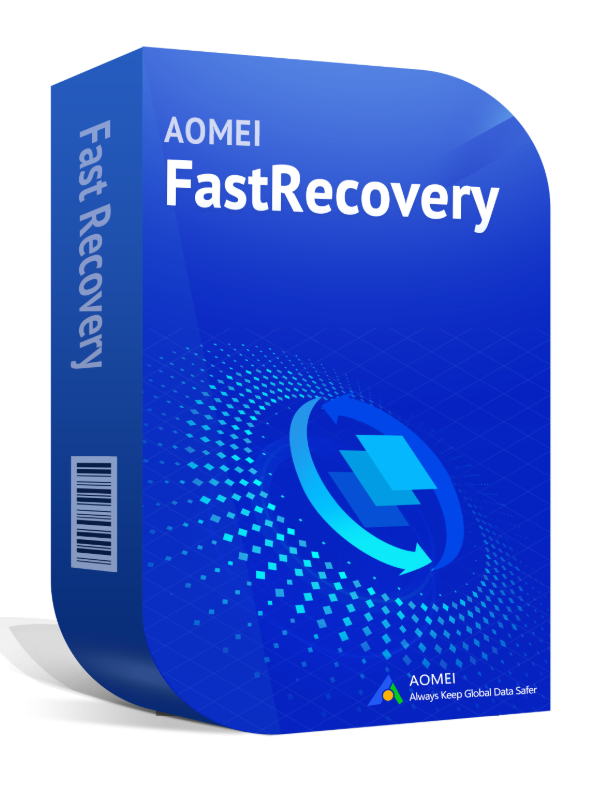Want to recover data from 2TB external hard drives quickly and easily? This page will provide you with the most effective way to perform external hard drive recovery.

There's no denying the convenience of external hard drives. They let us carry massive amounts of data and easily share files between devices. But here's the thing - we often overlook how fragile these devices can be, and the panic that sets in when we realize we might lose all our precious data.
“How to recover data from 2TB external hard drive? Is it possible through data recovery software? I don’t know if I deleted them by mistake or the data is lost due to other reasons. I have a lot of important files in it. Thank you very much”
Have you also encountered data loss from 2TB external hard drive? In this article, you can learn how to recover data from 2TB external hard drives easily and quickly. Also, it's crucial to be prepared to prevent data loss.
Before we perform external hard drive recovery, discover the primary causes behind file or folder disappeared from external hard drive.
🧨Accidental Deletion: Human error deleting unimportant files from 2TB external drives results in data loss.
🎇 File System Corruption: Malware attacks can cause Windows to detect file system corruptions on your 2TB external HDD.
🎃 Multi-Computer Usage: Using the same external hard drive on multiple computers can lead to data loss or corruption.
🎡 Sudden Termination: Power outages or unplugging the external HDD mid-read/write can wreak havoc on your data.
No need to panic if you've experienced file deletion or loss on your external hard drive. The solution is simple - turn to external hard drive recovery software like AOMEI FastRecovery.
It is the best way to recover deleted files from external hard drives on Windows 11/10/8/7 or Windows Server. This safe and professional external hard drive data recovery software can help you recover 2TB external hard drive with simple clicks.

Step 1. Choose and scan the external hard drive
Connect your external hard drive to the PC. Download and run AOMEI FastRecovery on your Windows. Then, hover the mouse over your 2 TB external hard drive and click Scan.
Step 2. Filter and preview the files
AOMEI FastRecovery will scan your 2 TB external hard drive automatically and thoroughly to locate all the found data. You can use the Search or the Filter feature to quickly locate the files you want.
Step 3. Recover files
Choose your desired files to recover and click Recover x files. Select a new location to save the recovered files. Then, your 2TB external hard drive recovery is finished.
Data loss on external hard drives can be a real headache, but with some preventive measures, you can minimize the risk and ensure the safety of your valuable information. Here are some tips to help you prevent data loss on your external hard drive:
1️⃣ Safely Eject: Always use the "Safely Remove Hardware" option before unplugging your external hard drive. It reduces the chances of data corruption.
2️⃣ Protect from Physical Damage: Handle your external hard drive with care. Avoid dropping, exposing it to extreme temperatures, or any physical damage that might affect its functionality.
3️⃣ Keep It Virus-Free: Use reliable antivirus software to scan your external hard drive regularly. This helps detect and remove any potential malware or viruses that could corrupt your files.
4️⃣ Test for Errors: Periodically run diagnostic tests on your external hard drive to check for any errors or bad sectors, which helps identify potential issues before they result in data loss.
5️⃣ Regular Backup: Create a habit of backing up your important files on a separate or cloud storage device. It acts as an insurance policy in case of any unforeseen events.
Here comes a highly-praised free backup software for Windows, AOMEI Backupper Standard to ensure data security. With its fantastic features, such as incremental and differential backup, your backup tasks are made simple and hassle-free. Maybe you can have a try.
Losing data can be extremely frustrating, but using a reliable data recovery tool can be a lifesaver. With a tool like AOMEI FastRecovery, you can save time and effortlessly recover data from 2TB external hard drives like Seagate, Maxtor, Toshiba, LaCie, etc. This method boasts a high success rate and fast speed, making the recovery process much smoother.
However, prevention is always better than cure. To avoid the headache of data loss, it's crucial to create file backups regularly. AOMEI Backupper Standard, a free and dependable data backup software for Windows, can help you effortlessly and quickly restore your files when needed.